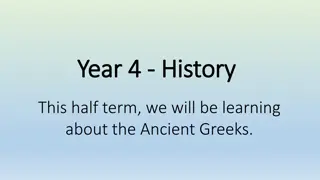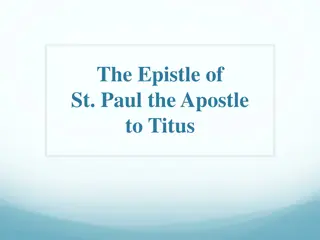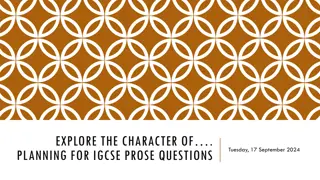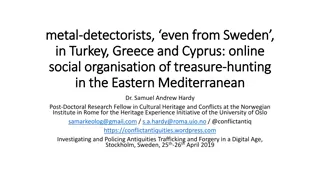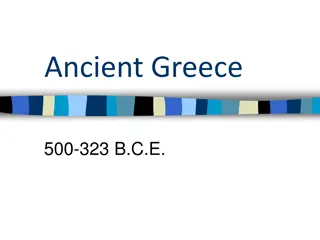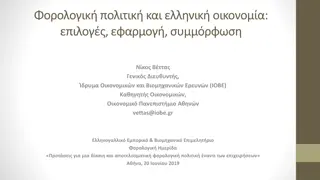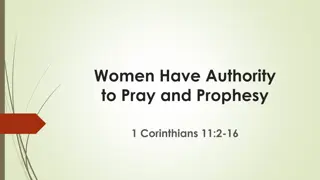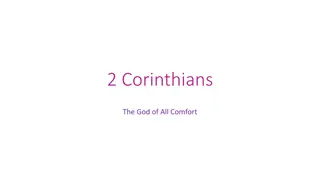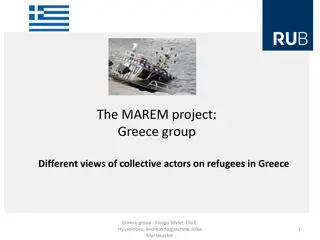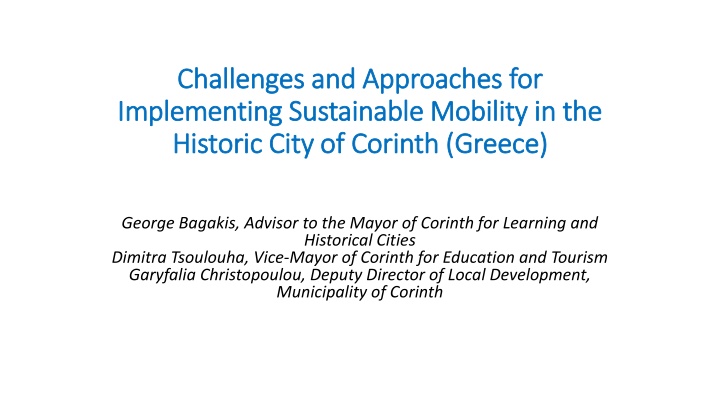
Challenges and Approaches for Implementing Sustainable Mobility in Historic City of Corinth
"Explore the challenges faced in implementing sustainable mobility in the historic city of Corinth, Greece. Discover approaches to integrate cultural heritage with modern transportation for a more sustainable urban environment."
Download Presentation

Please find below an Image/Link to download the presentation.
The content on the website is provided AS IS for your information and personal use only. It may not be sold, licensed, or shared on other websites without obtaining consent from the author. If you encounter any issues during the download, it is possible that the publisher has removed the file from their server.
You are allowed to download the files provided on this website for personal or commercial use, subject to the condition that they are used lawfully. All files are the property of their respective owners.
The content on the website is provided AS IS for your information and personal use only. It may not be sold, licensed, or shared on other websites without obtaining consent from the author.
E N D
Presentation Transcript
Challenges and Approaches for Challenges and Approaches for Implementing Sustainable Mobility in the Implementing Sustainable Mobility in the Historic City of Corinth (Greece) Historic City of Corinth (Greece) George Bagakis, Advisor to the Mayor of Corinth for Learning and Historical Cities Dimitra Tsoulouha, Vice-Mayor of Corinth for Education and Tourism Garyfalia Christopoulou, Deputy Director of Local Development, Municipality of Corinth
CORINTH Contemporary Corinth is a medium-sized city in Greece, with a population of about 60,000. It was largely rebuilt after a catastrophic earthquake in the early 1900s. The Municipality of Corinth includes the city of Corinth, with the majority of its inhabitants residing within a 3 km radius, and several smaller communities located within a 30 km radius.
THE FOFUS OF THE PRESENTATION This study focuses on the city of Corinth, which is situated near Ancient Corinth, giving it a unique cultural heritage, particularly in its periphery. The central challenge for modern Corinth is how to value and integrate the vast cultural heritage surrounding the city, primarily stemming from Ancient Corinth. We aim to explore the distinctive characteristics of Corinth as a historical city, particularly in relation to sustainable transportation within urban areas.
MORE CONCRETLY Envision a circle radiating from the center of Corinth (marked by the Statue of Pegasus), with a fan-like configuration extending 5 km outward, where each ray reaches significant historical sites and monuments. The central concept is to connect the center of Corinth where the Statue of Pegasus stands, in front of the port with key historical sites and monuments located on the periphery, through alternative modes of transportation. Although some connections already exist via walking and bicycle paths, many more are needed. The flat terrain of Corinth and its surroundings is favorable for creating such sustainable connections, linking the city's center to the various types of cultural heritage spanning many centuries.
Some notable sites in this periphery include: Ancient Port of Lechaion Ancient Corinth and the Castle of Acrocorinth Monument of Saint Paul Monuments of Diogenes Ancient Quarry Ancient Port of Kechries Archaeological Museum of Ancient Corinth and the Temple of Apollo Museum of Isthmia
Here are three examples of existing alternative routes: Ancient Corinth to Acrocorinth: An old walking path maintained by the Mountaineering Club of Corinth, which is being cleared and will soon be marked, largely through voluntary efforts. Lechaion to Ancient Corinth: A plan is in place to create walking paths from the ancient port of Lechaion to Ancient Corinth, with potential extensions along the canal and the Ancient Diolkos, primarily driven by local initiatives and mountaineering clubs. Cycling Route along Poseidonia Beach: The Municipality of Corinth is developing a cycling route along Poseidonia Beach, utilizing a low-traffic road. Additionally, plans exist to convert unused railway tracks into walking and cycling paths. More cycling routes are being considered, such as those leading to the old port of Lechaio and Mount Kranio, where an Early Christian Temple stands.
DISCUSSION Although there are ongoing efforts to highlight Corinth s cultural heritage within the city center (e.g., churches, statues) and near the center (e.g., archaeological sites, museums), much work remains due to the dense urban environment and commercial pressures. The creation of accessible, alternative transportation routes between the center and the historical sites on the periphery offers opportunities to better experience and preserve these significant locations, in contrast to the current reliance on cars and heavy traffic. In doing so, both the conservation and enjoyment of Corinth s cultural heritage will be enhanced.
We welcome your feedback and suggestions to further refine our initial ideas, with which we aim to contribute to this conference

![❤[PDF]⚡ Civil War Talks: Further Reminiscences of George S. Bernard and His Fel](/thumb/20551/pdf-civil-war-talks-further-reminiscences-of-george-s-bernard-and-his-fel.jpg)
![❤Book⚡[PDF]✔ Doing the Impossible: George E. Mueller and the Management of NASA’](/thumb/21684/book-pdf-doing-the-impossible-george-e-mueller-and-the-management-of-nasa.jpg)


